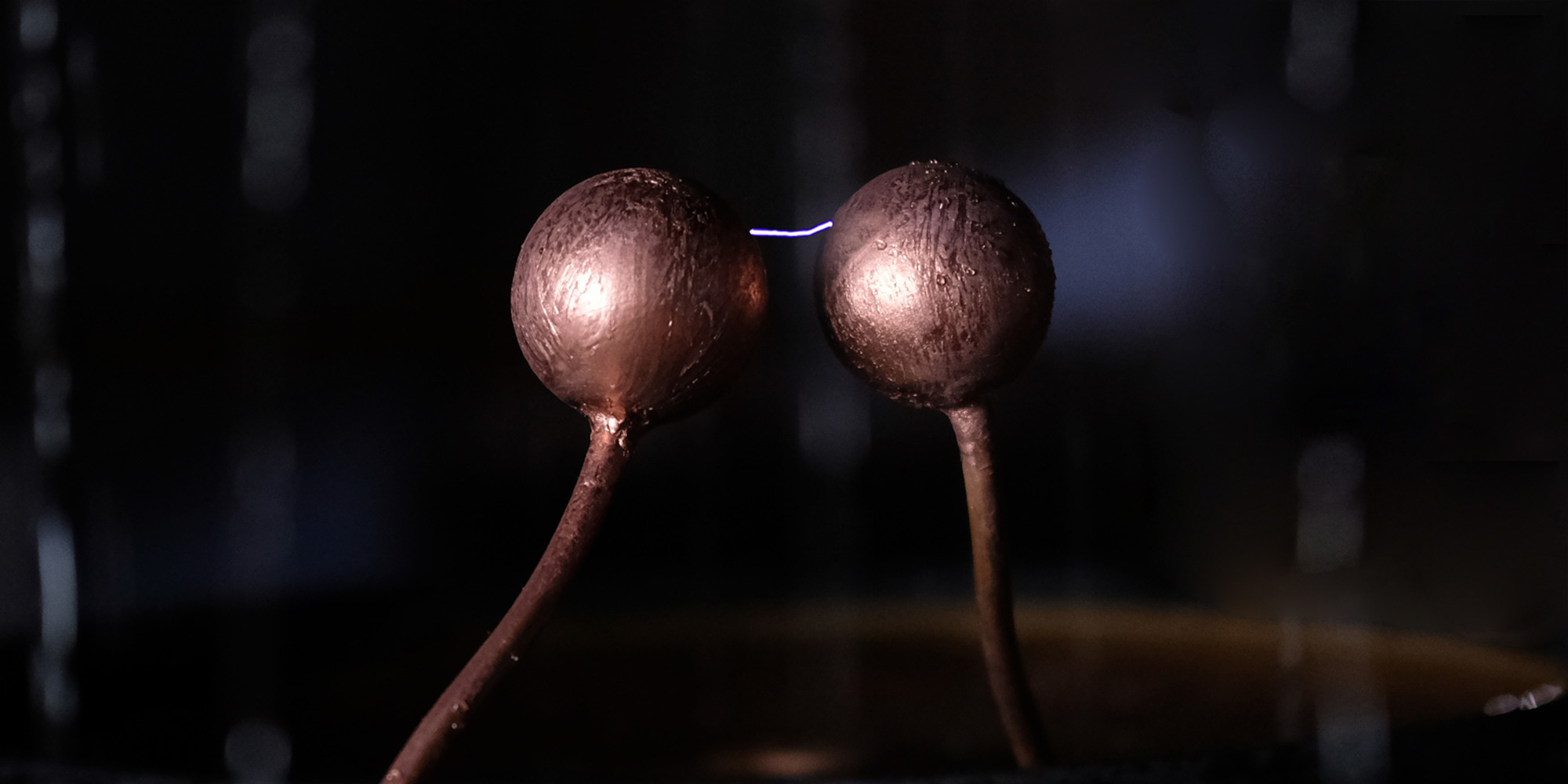This installation is based on a simple physical principle: the generation of electrostatic charges using water. The charged water droplets whirl in dynamic tracks around copper rods and react to nearby bodies. The collected charge can make a light bulb glow and generate flashes of lightning that can be centimetres long.
Dancing Water
The physical phenomenon underlying this installation is called electrostatic induction, wherein the same charge carriers repel each other, and different ones attract each other. It enables the energy of the falling water droplets to be converted into electrostatic charges. The objects have no need for electronics or hidden energy sources; only the water pump needs electricity.
Video
Project Credits / Acknowledgements
Leon Kainz: concept, know-how, implementation
Su-Mara Kainz: artistic accompaniment, video, photo
Yuti Kainz: artistic realization, illustration
Institute of Experimental Physics, Soft Matter Physics Division (SoMaP), Johannes Kepler University Linz
Institute of Semiconductor and Solid State Physics, Johannes Kepler University
Supported by Land Oberösterreich




